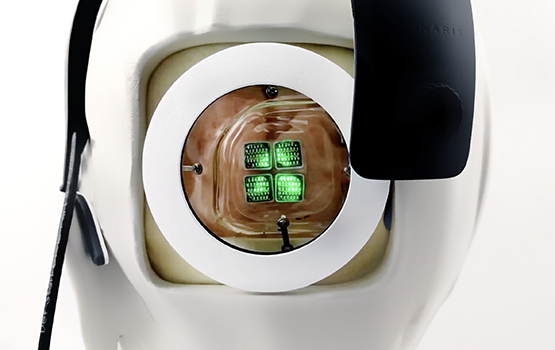Over a decade’s worth of work by scientists working at Melbourne, Australia’s Monash University has produced a first-of-its-kind device that can restore vision to the blind, using a combination of smartphone-style electronics and brain-implanted micro electrodes. The system has already been shown to work in preclinical studies and non-human trials on sheep, and researchers are now preparing for a first human clinical trial to take place in Melbourne.
This new technology would be able to bypass the damaged optic nerves that are often responsible for what’s defined as technical clinical blindness. It works by translating information gathered by a camera and interpreted by a vision processor unit and custom software, wirelessly, to a set of tiles implanted directly within the brain. These tiles convert the image data to electrical impulses which are then transmitted to neurons in the brain via microelectrodes that are thinner than human hair.
There are still a number of steps required before this becomes something that can actually be produced and used commercially — not least of which is the extensive human clinical trial process. The team behind the technology is also looking to secure additional funding to support the eventual ramp of manufacturing and distribution of its devices as a commercial venture. But its early studies, which saw 10 of these arrays implanted on sheep, saw that over the course of a cumulative total of more than 2,700 hours of stimulation, there weren’t any adverse health affects observed.
Animal studies are a very different thing from human studies, but the research team believes their technology has promise well beyond vision. They anticipate the same approach could provide benefits and treatment options for patients with other conditions that have a neurological root cause, including paralysis.
If that sounds familiar, it might be because Elon Musk recently revealed ambitions to use his company Neuralink’s similar brain implant technology to achieve these kinds of results as well. Musk’s project is hardly the first to imagine how devices paired with modern software and technology could overcome biological limitations, and this effort from Monash has a much longer history of working toward turning this kind of science into something that could impact the lives of everyday people.
